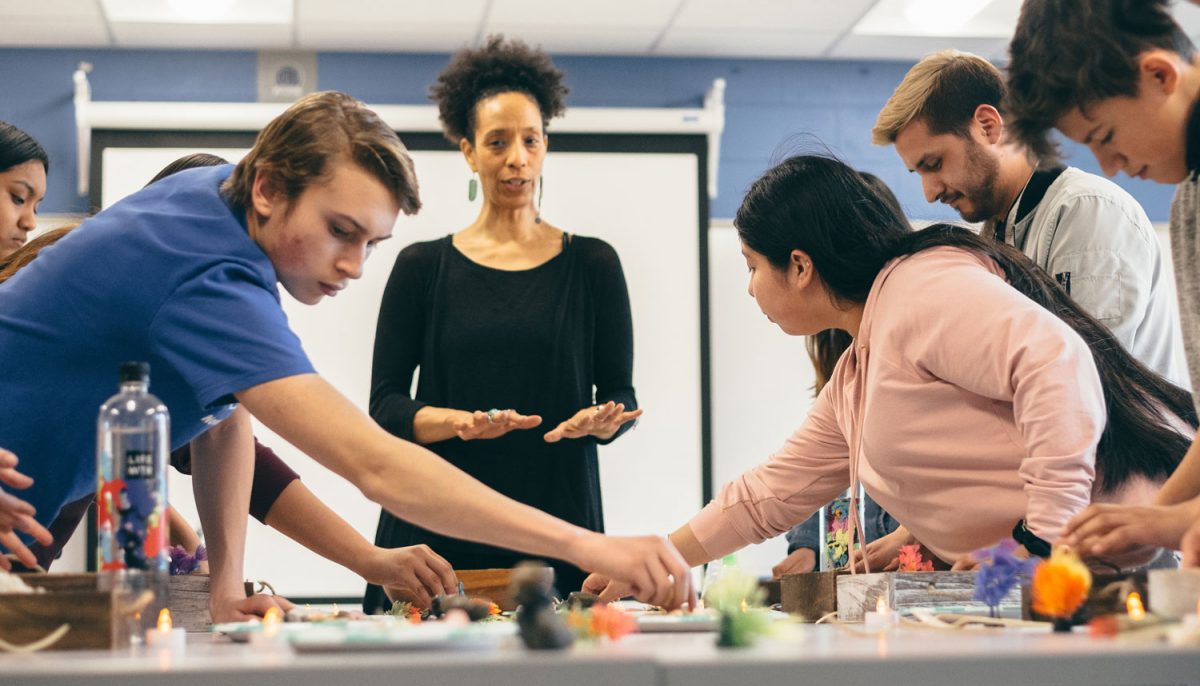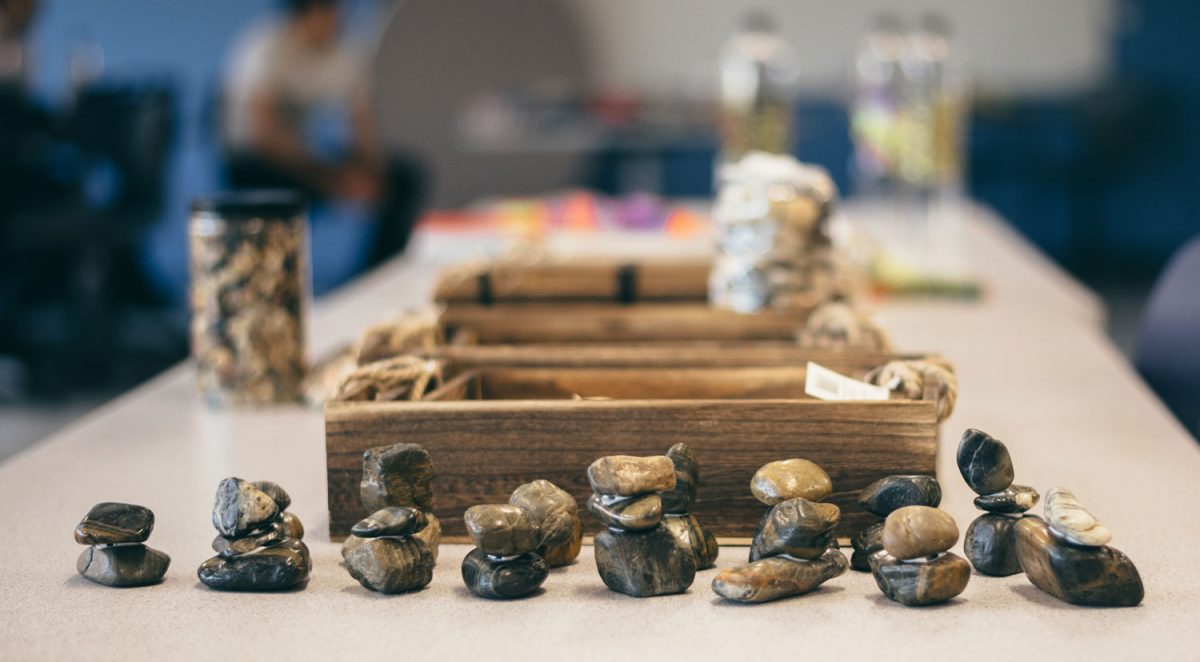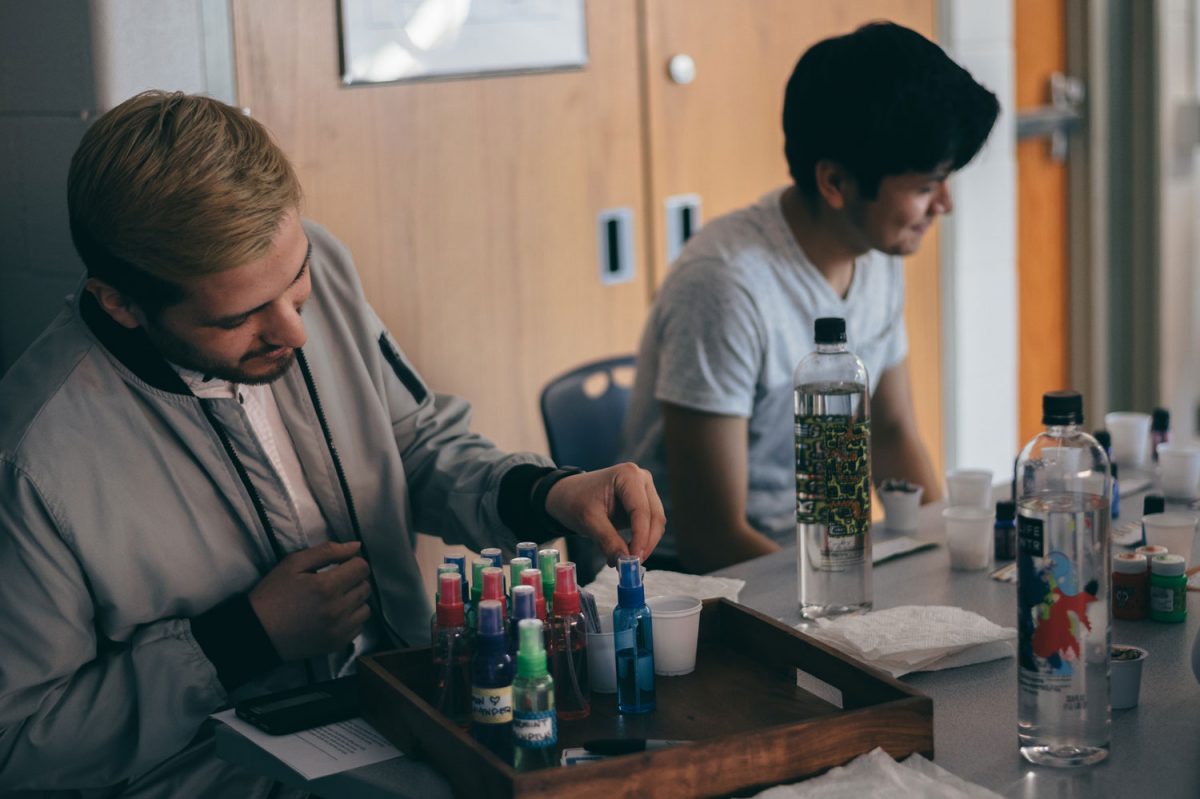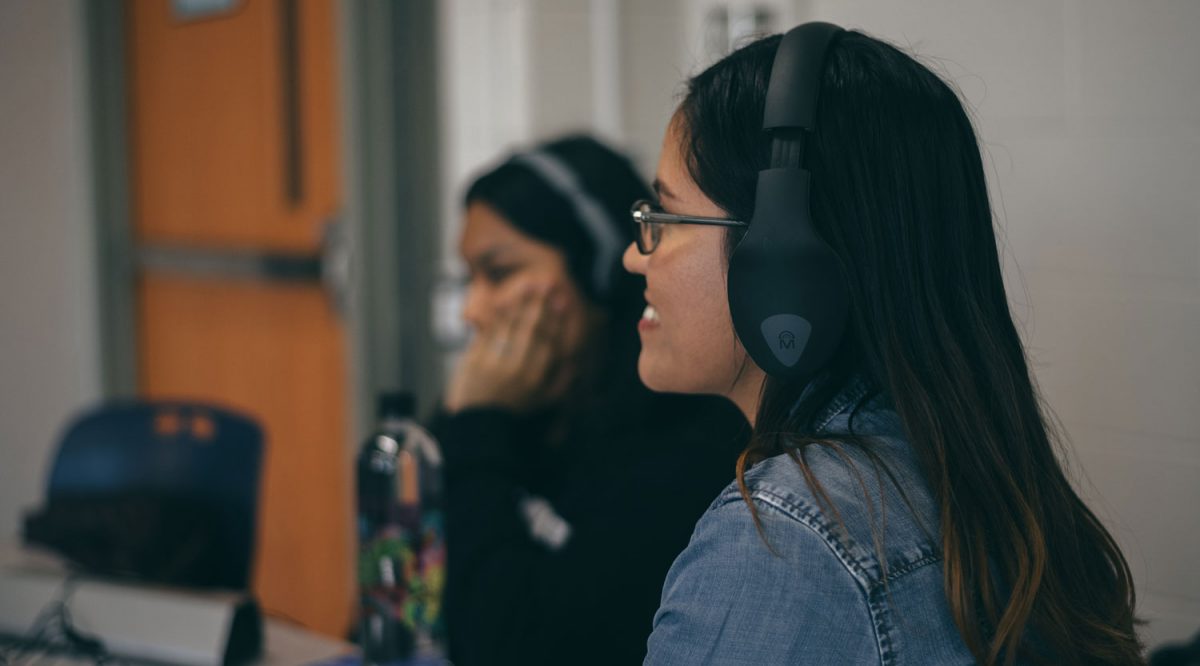Practicing Self Care through the Arts
Self care may be a hot topic these days, but its connections to the arts and a creative state of mind are hardly new concepts. For creatives like Urban Gateways teaching artist Sonja Henderson, the benefits of arts practices for mental health offer up a world of possibilities.
In March 2018 Sonja led a workshop through Family Service of Lake County (Nuestro Center location) for students in the Latino Youth Initiative program at Highland Park High School, focusing on self care through the arts. Her thoughts around this experience are not only insightful, but they link beautifully with Urban Gateways’ Arts Healing Trauma initiative. Work like Sonja’s highlights the value of art-making in creating social change, so we wanted to share our interview with Sonja so that our supporters can dig deeper into this practice. Don’t miss beautiful photos of this workshop by Sehar Sufi on Flickr.
Urban Gateways: Can you talk a little about this particular workshop at Nuestro Center?
Sonja: This workshop was brought about because the middle school and high school group at Nuestro Center was focusing on mental health for the month of March. They have themes for each month with specific activities/workshops tied to the theme. This workshop centered on students finding ways to de-stress and take a breath since high school can be stressful, especially when looking at higher education.

How did you build connections between self care and creative practices during this workshop?
I have come up with a series of activities that creates a relaxed and stress-free environment. When everyone feels safe and calm we begin to move the body and do activities that circulate more oxygen to the brain, spine, and extremities. When everyone is loosened up we begin to put the participants in a meditative state with vibrational tones (music is great for changing moods and frequencies) and a series of short art projects that lull them into a calm state, mainly through repetitive motions.
All of the activities have an intention and keep the participant focused on what they need from the workshop. Many of the activities engage the 5 senses, which either activates or calms different parts of the brain. The projects are a lot of fun, simple, and aesthetically pleasing. For students, most of the activities or projects are small or pocket size (like a worry stone) so they can take it wherever they go. We usually end by creating a portable Zen Garden and sharing what we have taken from the activities and lessons provided. My hope is that students in particular can use these de-stressors when feeling uncomfortable or anxious.
[Activities included group movement, listening to binaural beats, experimenting with tuning forks, breath exercises with essential oils and bubbles, Tai Chi, peace sticks, worry stones, and zen gardens.]

What do you hope the students will take away from this experience?
I hope the students and/or participants take away a real sense of peace and some mini coping skills for when emotions rise. I also want students to understand that it is okay to be emotional and to experience one’s emotions fully while also understanding that emotions are temporary and fleeting. It is important to understand that you can have happy moments when you are sad and sad moments when you are happy. We are taught that it is only okay to be happy, ecstatic, euphoric, or passionate and many of the depressive emotions are shamed. We are made up of all sorts of emotions and they all come and go…but, it is also important to recognize when they become unchanged, harmful and/or burdensome. It is extremely rewarding to work through particularly hard emotions and come out the other side…that’s called growth, and emotional growth is uniquely human.

How does this workshop relate to the Arts Healing Trauma initiative you’ve been participating in with Urban Gateways (trauma responsive training and work with UCAN, as well as other arts experiences you have led)?
I spoke briefly but thoughtfully with the Nuestro Center workshop facilitators. The facilitators spoke very candidly and emotionally about how the high school experience [such as the emphasis on college] can put pressure on non-white, non-middle class, ESL, and/or lower performing students. For many students, articulating the emotions associated with such pressure can be difficult and often stifling. With UCAN [during a trauma responsive training for Urban Gateways staff and artists], we learned the importance of a person needing to express their own voice… even if the choice is not to speak, that is their choice.
We walk through life not knowing who we may encounter that has suffered a trauma or more likely multiple traumatic experiences. Our UCAN training taught us to be aware of this and how to make spatial and other allowances for students struggling with their emotions. I grew up understanding the basics of sympathetic vibration – a vibration produced in one body by the vibrations of exactly the same period in a neighboring body. Everything has a vibratory frequency, especially people. Our responsibility on this “earth school” is to be in tune with our emotions and emotional body while raising a low vibratory frequency and nurturing a high vibratory frequency.
People who have experienced trauma are more likely to be in a low frequency state of being. For some that may mean depression or shutting down, or for others it may be externalized as restlessness or hyper-activity, and for many they are just living in fight/flight mode. It is important for everyone to recognize this behavior and be sensitive or “sympathetic” to it so that more harm is not done to the child, student, or adult.
I have come up with a series of activities that helps decompress these emotions and helps to relax the body, then the mind. I really enjoy the Health and Wellness workshops because they seem to bring release, relaxation, and most often joy!
